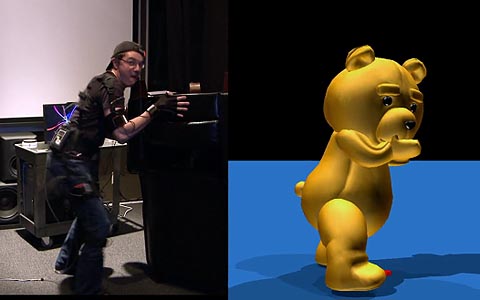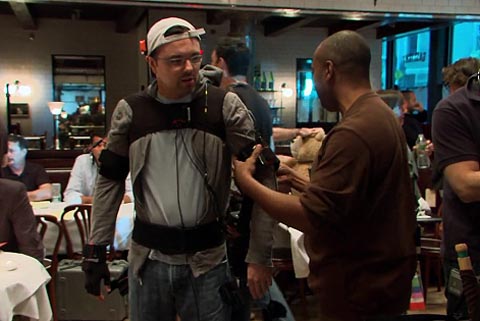

How Seth MacFarlane Created The Animation In “Ted”

It’s looking like this weekend’s box office crown will belong to Seth MacFarlane’s Ted. Even though it’s a largely live action film, the main star–Ted the bear–is an animated character. The character animation was divided between two studios–Melbourne/Sydney, Australia-based Iloura and Berkeley, California-based Tippett Studio.
In the film’s promotional materials, Universal Pictures is encouraging the idea that the character was created by recording the actions of MacFarlane wearing a motion capture suit. There’s a video posted on the LA Times website that compares MacFarlane’s live-action performance to the animation.

But that’s only part of the story. This interview with visual effects producer Jenny Fulle explains that motion capture wasn’t used nearly as much as the film promos would suggest. Fulle says:
“We really focused on motion capture from his waist up–because he has a lot of mannerisms with his hands and he rocks back and forth and moves backwards and forwards and stuff like that. What we would also do is keep a high-definition camera on his face. That way we could also capture a visual representation of what he does with his eyebrows and when his eyes go wide and that sort of thing. We would then give that to the animators so they could just manually take that look and apply it to the bear.”
Not only was all the facial animation keyframed, a lot of the physical performance was too, according to one of Ted‘s animators, Jonathan Lyons, who wrote an informative post on his blog Comedy for Animators:
“There was motion capÂture used on the film. MacFarÂlane would put on a Moven suit, on set and act out the parts for the Ted scenes they were shootÂing that day. It was mostly used for scenes of Ted sitÂting and talkÂing. So it was a lot of arm gesÂtures and head and shoulÂder motion. That’s about it. For the larger action, it was all keyframe animation.”
The film, which is pleasantly amusing if overlong, succeeds largely on the merits of Ted’s animation, which serves the needs of the story quite well. While motion capture was undoubtedly part of the filmmakers’ toolset, it’s clear that a large portion of the animation was keyframed–the same kind of animation that we see on Pixar and DreamWorks films. Motion capture will continue to receive a disproportionate amount of media coverage simply because it’s more exciting to show an actor jumping around in a fancy suit than it is a sullen animator sitting behind a monitor. But at the end of the day, it’s still traditional character animators who are most responsible for bringing to life audience-pleasing favorites like Ted.
